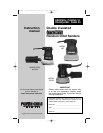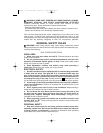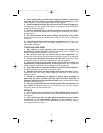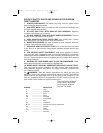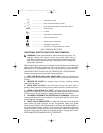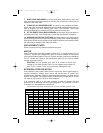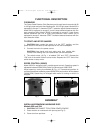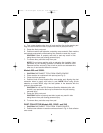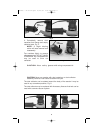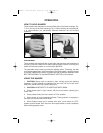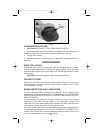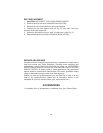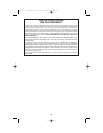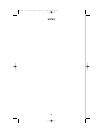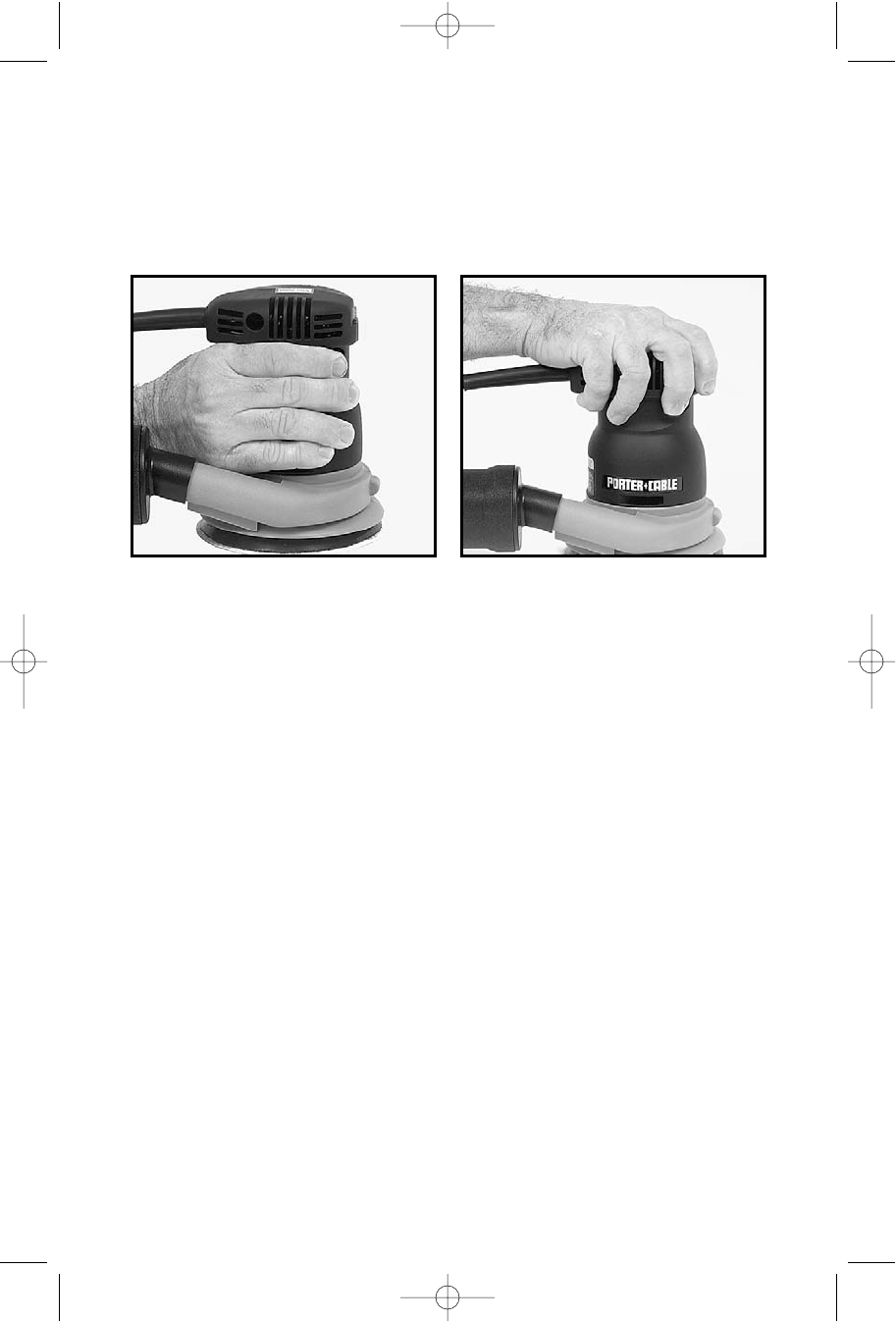
10
OPERATION
HOW TO HOLD SANDER
These sanders are designed to be held either around the main housings, Fig.
7, or by the top of the main housings, Fig. 8. When sanding for long periods,
it is recommended you periodically alternate between the two holding
positions.
PAD BRAKE
These sanders are equipped with a pad brake that prevents over-speeding of
the pad. If the tool is lifted off the work surface while the motor is running, the
brake will limit pad rotation to no more than 400 RPM.
The pad brake uses a belt to provide the braking action. Eventually, this belt
may require replacement. If the brake fails to limit pad rotation, send the sander
to a Porter-Cable service facility or replace the belt yourself as explained under
BELT REPLACEMENT in the MAINTENANCE SECTION of this manual.
USING THE SANDER
1. CAUTION: Secure work to prevent it from moving during the sanding
operation. Friction between the sanding disc and work will try to spin work
away from sander and may cause bodily injury.
2. CAUTION: WEAR SAFETY GLASSES AND DUST MASK.
3. Place sander pad in light contact with the work before switching the
motor “ON”.
4. Grasp sander firmly and move switch to “ON” position.
5. Move sander in long overlapping strokes. Tipping sander or stopping in
one spot can produce an uneven finish.
6. When finished, keep pad in contact with work, move switch to “OFF”
position and lift sander from the work. Allow pad rotation to stop completely
before setting sander down.
Fig. 7
Fig. 8
900006 - 02-07-02.qxd 10/15/02 2:25 PM Page 10



